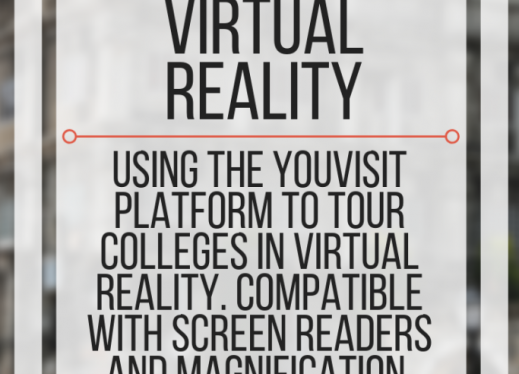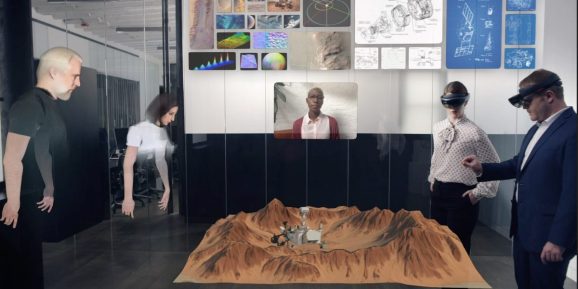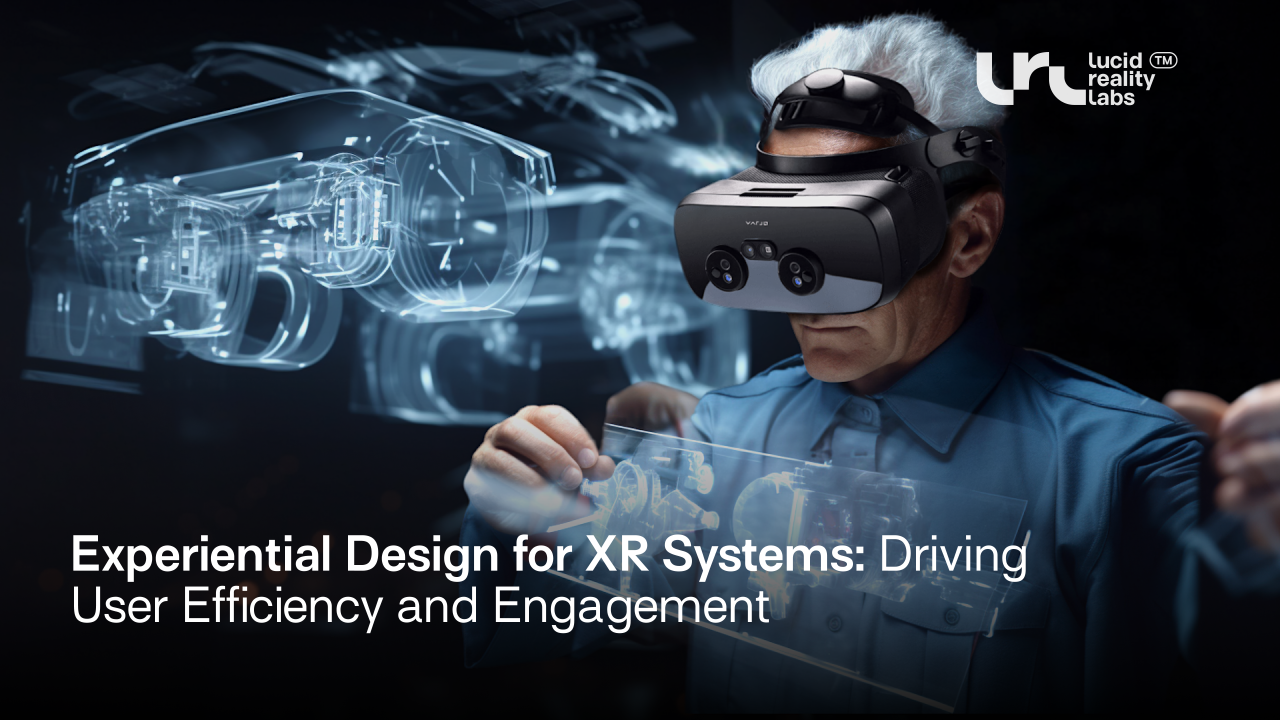As technology continues to evolve, future college students now have an additional way to search for higher education by touring colleges with virtual reality. Virtual college tours can give students the opportunity to get to know their future campus, from the comfort of their school or home. This is especially beneficial for students with chronic illness or disability that may not have the time or energy for a traditional college tour. Today, I will be sharing my tips for touring colleges with virtual reality using the popular YouVisit platform.
What is virtual reality?
Virtual reality is known by many names, including 360 video, immersive video, spherical video, and augmented reality. It can also be abbreviated as VR or AR. Virtual reality allows for a user to immerse themselves in a virtual environment using technology. Videos are shot with multidirectional cameras from every angle, and put together using a technique called video stitching. Virtual reality allows for a user to be completely immersed in an environment, while augmented reality allows for a blending of virtual reality and the real world.
While many virtual reality simulations require special equipment, touring a college with virtual reality requires no special equipment. Users only need an internet-connected computer, tablet, or phone.
Related links
- VR for VI- Virtual Reality and Vision Impairment
- Touring the 9/11 Museum with Virtual Reality
- Exploring the Life of David Bowie With Virtual Reality
What is YouVisit?
YouVisit is a platform that allows colleges to create their own tours using virtual reality technology. Over 600 colleges from all across the country have tours on YouVisit. Their virtual college tours integrate 360 degree video, photos, audio, and video so that potential students can explore the campus freely using their technology. Students also have the option to add themselves to the college mailing list so they can get more information.
YouVisit virtual college tours can be accessed on their website, with the option to use a VR headset. Tours can be accessed on any computer, tablet, or phone. No account is required to view tours. I tested YouVisit with my Android phone, iPad, and desktop computer with successful results.
Related links
Why to use virtual reality to tour colleges
There are many benefits to going on a college tour with virtual reality, besides saving money from traveling. Some of these benefits include:
- No need to worry about the weather affecting the tour- it’s less fun to tour a college when it’s pouring rain
- Students can visit more diverse colleges, not just whatever is within driving distance
- See how far apart buildings are on campus
- Get into areas that may not be on the normal tour
Related links
Examples of locations on the tour
While each college is different, all of the virtual college tours I explored included the following locations:
- Student center
- Campus landmark, i.e statue
- At least one residence hall
- Outdoor area
- Dining hall
- Classrooms
- Arena/performing arts center
- Surrounding areas on campus
Related links
Enabling accessibility view
Every tour on YouVisit has an accessibility version available that is designed for students with low vision or blindness. The accessibility version works well with screen readers and screen magnification. Users can view high resolution images with alt text, though students with low vision may prefer to check out the 360 images in the traditional tour as well. Videos do not auto-play, and there are transcripts available for students to listen to on their own time.
To activate accessibility view:
- Open a college tour of your choice
- Fill out student information, or click the „x“ button to skip
- Once on the home screen, click the shaded eye icon to open accessibility view. The location of the accessibility button varies depending on the college. I usually found it either on the bottom or the center of the screen
Strangely enough, NVDA did not recognize the accessibility button, but VoiceOver and TalkBack did. I’m not sure why this is the case.
Related links
Using additional tools for virtual college tours
While YouVisit provides lots of great resources, students may want to use other softwares and websites to explore their future college. Here are some of my recommendations:
- Use Google Maps to see how far apart different addresses are on campus. When I’m picking a dorm, I like to type in the address and get walking directions for common locations I travel to on campus to see how far I have to walk.
- Many colleges have interactive maps on their website that show important accessibility information. Just run a web search with your college name and „interactive map“
- Use social media- more on that in the next section
Finding additional college tours on social media
When I was a freshman, my college had several video tours posted across social media. These video tours included audio description and featured the same locations as the virtual reality tours, but with more detailed information. Some examples include specific dorm buildings, floors of the library, and individual department tours.
Important things to note about virtual reality college tours
Here are a few important things to remember when visiting a college virtually:
- These images are staged and may not reflect the everyday appearance of rooms and hallways. Campus appearance can change frequently
- There may be ongoing construction or remodeling of buildings, so it helps to check the college’s construction website to see how things may change in the future. This is especially important for people who use mobility aids
- While virtual college tours are a great place to start, make sure to tour the college in person before making the decision to go there.
- Prior to graduation, students should make sure they have important transition skills such as the ability to use technology, self-advocate, and similar skills.
Related links
Follow up with additional questions
Once you’ve done a virtual reality campus tour, make a list of questions you want to ask staff members that the tour did not answer. Some example questions may include:
- How do I register for a Disability Services file?
- What is the application process?
- Do the dorms have air conditioning?
- Is there a bus system on campus?
- Is there an on-campus security or police department?
Related links
- How to register for Disability Services
- Ten questions to ask when choosing a college
- Ten more questions to ask when choosing a college
- Using the bus system on campus
- When to call a security escort
Final thoughts
Exploring colleges with virtual reality can be a great way for students to discover their preferences for their future college choices, because they can tour so many different types of campuses. It’s also a great way to help students think ahead for college and prepare for transition to higher education. I highly recommend that students try at least one virtual college tour and learn more about their potential college choice with the power of technology.
Quelle:
http://www.perkinselearning.org/technology/blog/touring-colleges-virtual-reality




